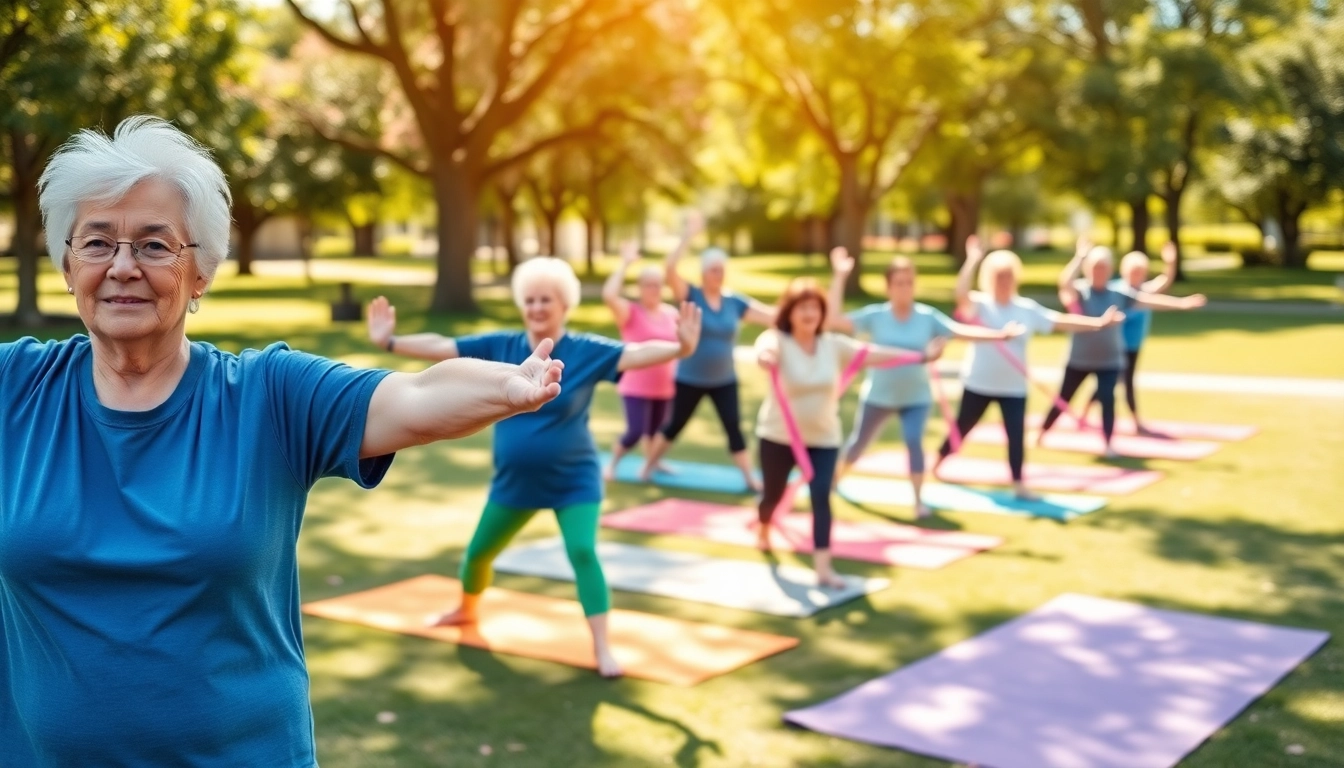Understanding the Importance of Senior Fitness Training
As we age, our bodies undergo numerous changes that can significantly impact our overall health and well-being. Thus, it becomes crucial to prioritize regular exercise tailored to senior adults. Senior fitness training not only enhances physical strength and mobility but also contributes to improved mental health, reducing the risk of chronic diseases and enhancing quality of life. This section delves into the multifaceted reasons why senior fitness training is essential.
The Benefits of Exercise for Seniors
Engaging in regular exercise offers several profound benefits for seniors, including:
- Improved Physical Health: Exercise helps maintain a healthy weight, improves cardiovascular health, and can manage chronic conditions such as hypertension and diabetes.
- Enhancing Mobility and Flexibility: Fitness programs tailored to seniors help improve their balance, coordination, and flexibility, which are critical for preventing falls and injuries.
- Mental Health Benefits: Physical activity releases endorphins that can uplift mood and combat feelings of depression and anxiety, significantly improving mental well-being.
- Social Engagement: Participating in group classes or activities fosters social connections, alleviating feelings of loneliness and isolation.
- Cognitive Function: Regular physical activity is linked to better cognitive function, helping stave off issues related to memory and processing.
Common Barriers to Participation
Despite the benefits, many seniors encounter barriers that prevent them from engaging in fitness programs. Common challenges include:
- Fear of Injury: Concern over falling or sustaining injuries can deter seniors from participating in fitness activities.
- Health Issues: Seniors might have chronic pain or health conditions that limit their ability to exercise fully.
- Lack of Motivation: A sedentary lifestyle or the absence of encouraging social circles may lead to a lack of motivation to join fitness programs.
- Accessibility: Limited access to facilities or resources tailored for seniors can hinder participation.
Key Components of Effective Training Programs
Creating a successful fitness program for seniors requires a holistic approach that considers their unique needs. Effective training programs include:
- Individual Assessments: Evaluating individual capabilities through physical assessments to tailor programs appropriately.
- Variety of Exercises: Incorporating a mix of strength, endurance, flexibility, and balance exercises to ensure comprehensive fitness.
- Progressive Overload: Gradually increasing the intensity of workouts as individuals grow stronger to continuously challenge their muscles.
- Education: Educating seniors on the importance of fitness and how to perform exercises safely to minimize injury risk.
Types of Senior Fitness Training
Different types of exercises target various aspects of health and fitness. Understanding these types can aid in designing well-rounded programs for seniors.
Strength Training and Its Benefits
Strength training is a vital component of any fitness regimen for seniors. Benefits of strength training include:
- Muscle Maintenance: Helps combat muscle loss, which naturally occurs with age.
- Bone Health: Increases bone density, reducing the risk of osteoporosis and fractures.
- Metabolic Rate: Boosts metabolism, supporting weight management and energy levels.
Recommended practices involve resistance exercises using weights, bands, or body weight, with a focus on major muscle groups.
Aerobic Activities for Improved Endurance
Aerobic fitness enhances cardiovascular health and endurance. Common aerobic exercises for seniors include:
- Walking: A gentle way to increase heart rate without excessive strain.
- Swimming: Provides full-body exercise and is easier on the joints.
- Dancing: Fun and engaging, encouraging movement and social interaction.
Engaging in at least 150 minutes of moderate aerobic exercise per week can lead to significant health improvements.
Flexibility and Balance Training Exercises
Flexibility and balance exercises can significantly reduce the likelihood of falls, which is a major concern for seniors. Important practices include:
- Stretching: Incorporating stretching routines can enhance flexibility and ease daily activities.
- Yoga: This promotes not only flexibility but also balance, strength, and relaxation.
- Tai Chi: A graceful form of exercise that focuses on slow, controlled movements can help improve balance and reduce anxiety.
Creating a Safe Senior Fitness Training Environment
A safe and supportive environment is paramount to promote regular participation in fitness programs for seniors. Key considerations include:
Assessing Individual Needs and Limitations
It’s critical to evaluate individual health status, mobility limitations, and any medical conditions that might affect their training. Consulting healthcare providers ensures accurate assessments and appropriate modifications to exercise routines.
Choosing the Right Equipment
Using equipment tailored for seniors can enhance safety and comfort. Recommended items include:
- Light Weights: Ideal for resistance training without overexertion.
- Resistance Bands: Versatile and easy to use, providing good options for strength training.
- Stability Balls: These enhance core strength and balance.
- Chair or Seated Options: Ideal for those with mobility issues, allowing them to exercise comfortably.
Implementing Safety Protocols During Training
Incorporating safety protocols takes precedence, such as:
- Using non-slip surfaces for workouts.
- Encouraging hydration before, during, and after exercise.
- Ensuring instructors are certified and trained in senior fitness.
Designing Tailored Fitness Programs for Seniors
A personalized approach is essential in developing effective fitness programs. Each training should address the individual’s capabilities, interests, and goals, leading to productive engagement.
Setting Realistic Goals and Milestones
Establishing attainable goals can motivate seniors to stay committed to their fitness journey. Consider setting short-term and long-term goals such as:
- Short-Term: Completing a specific number of workouts each week.
- Long-Term: Achieving a certain fitness level, like walking a mile without fatigue.
Incorporating Enjoyable Activities
Participation increases when activities are enjoyable. Incorporate variety by including:
- Music in classes to enhance enjoyment and energy levels.
- Games or group challenges to foster a sense of community.
- Sessions with different themes (e.g., dance, nature walks) to keep the routine fresh.
Adapting Workouts for Different Fitness Levels
Every senior has different fitness levels, thereby necessitating program adaptations. Tips include:
- Provide options—offering modifications for exercises to cater to both beginners and advanced participants.
- Regularly reassess participants’ progress to ensure they are challenged appropriately without discomfort.
Monitoring Progress and Adjusting Programs
Regularly assessing progress enables trainers to adjust programs to reflect individual growth and challenges effectively.
Using Metrics to Track Improvement
Track improvement not solely on weight or appearance but also on qualitative outcomes like:
- Increased endurance (e.g., longer periods of aerobic activity)
- Stronger muscles (e.g., ability to lift heavier weights over time)
- Improved flexibility (e.g., better range of motion in everyday activities)
Encouraging Feedback from Participants
Creating an open line of communication helps refine programs. Feedback may include:
- Participant satisfaction surveys post-classes.
- Encouraging personal reflections on how exercise is impacting their overall health.
When to Reevaluate and Modify Training Plans
Regular scheduled reviews (e.g., every 6-8 weeks) are vital to maintaining effective programs. Indicators for reevaluation can include:
- Participants expressing boredom or a lack of challenge.
- Health changes noted by participants or caregivers.
- Progress plateaus where participants are no longer improving.








